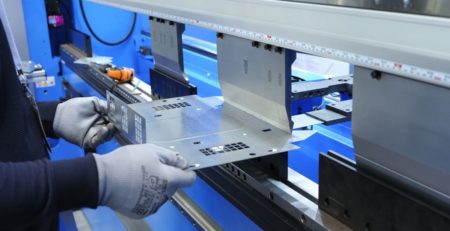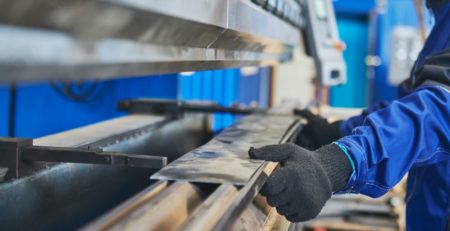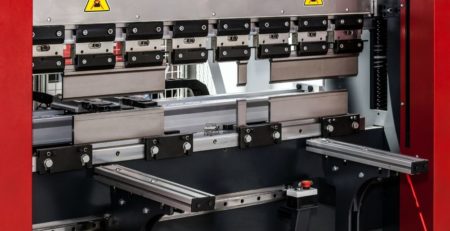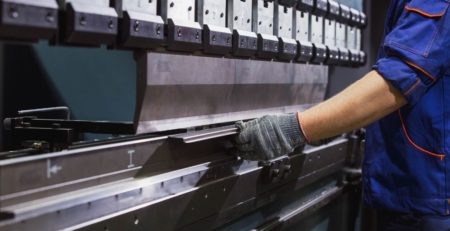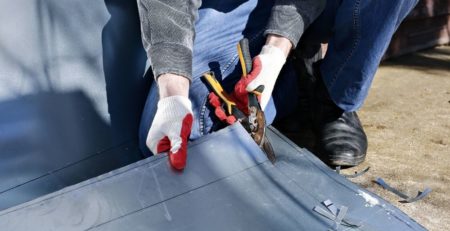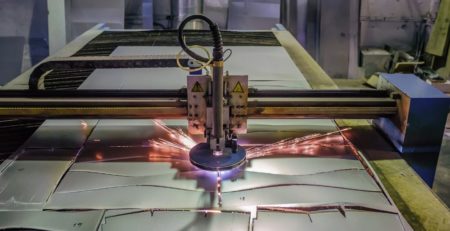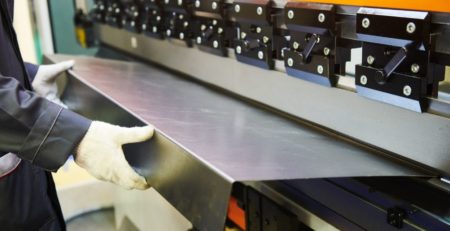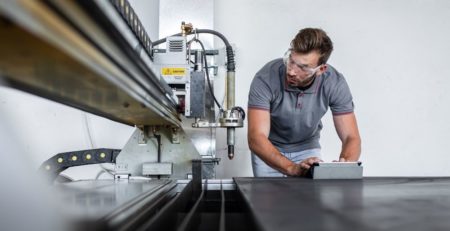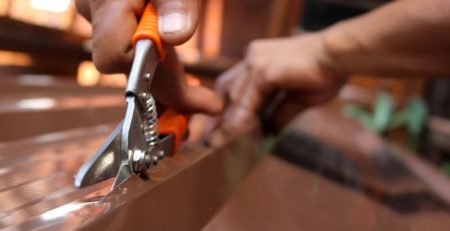7 Tips for Bending Long Pieces of Sheet Metal
Bending long pieces of sheet metal is a skill that requires practice and proficiency. Metal fabricators produce a range of products, including simple brackets, gears, auto and airplane parts, and steel I-beams. Their method depends on the materials they’re working with and the precision required to produce the desired results.
Fabricated metal products are all around, from wrought iron fences to stainless steel handrails, commercial kitchen countertops, and medical tools and devices. Even the perforated screw-on top of a restaurant salt shaker is a metal fabrication product.
There are special considerations for fabricated products made of very long sheet metal segments. Long and large metal pipes, steel studs for construction, and corrugated metal walls all require precise bends to form the correct shape in the right size without compromising the metal’s strength and appearance. Here are seven tips for bending long pieces of sheet metal:
Understand the Bending Properties of Different Types and Grades of Metal
Knowing which type and grade of metal to use is an important part of successful sheet metal bending. Metals have different properties that affect the bend radius and vary in factors like ductility and springback.
Bend Radius
Bend radius, also known as the bending allowance, is the distance a piece of sheet metal can bend before it breaks or weakens too much to be useful for the intended purpose. It’s a measurement from the center of the bend to the 90-degree point between the two sides of the bend. Every metal has a minimum bend radius (the smaller the radius, the more severe the bed), depending on material type and thickness.
Ductility and Malleability
Ductility is the ability of a material to stretch without breaking. Malleability, on the other hand, describes how or whether a metal will flatten when a machine or tool applies force to it. Malleability is a factor in tasks such as hammering metal into a thin foil or bending metal into a curve that compresses the bent area.
Highly ductile materials can be drawn into thin wires. Extremely malleable materials, like gold, can be hammered into very thin, flat sheets. Malleability is critical when bending sheet metal.
Springback
Springback is the tendency for a metal to return to its original form when the fabrication machine releases the pressure it had placed on it. Fabricators must account for a metal’s springback tendency so the final product will have the correct angles.
Some Metals Bend Better If Annealed
Annealing is a heat treatment process that softens metals and makes them easier to work with. Think of an old movie with a scene of a blacksmithing shop: the smith heats an iron rod and then pounds it into the desired shape, such as a horseshoe or axe head. The smith then plunges the hot metal into water to cool it. That’s a type of annealing.
Many metals can’t take the rapid cooling of water immersion. Instead, manufacturers cool them more slowly in sand or simply keep them in a shut-off heating chamber to cool slowly.
Some types of steel can be extremely brittle when cold-worked. Annealing helps reduce internal stresses that can cause warping or cracking in the metal.
Rely on CNC Machining
For precision bending jobs, relying on CNC (Computer Numeric Control) machining can be the best option. This process uses computer-aided design (CAD), computer-aided manufacturing (CAM), and a type of computer code that translates designs into instructions for machines that cut, bend, punch, bore, or stamp metals. CNC machines create highly accurate metal components. They achieve a level of precision that’s difficult to match with traditional bending methods and are especially useful for complex metal parts.
Choose an Appropriate Bending Process
Different techniques are appropriate for different sheet metal bending jobs. Common methods include air bending or bottom bending.
Air bending is a sheet metal forming process that bends sheet metal using a die and punch without pressing the metal to the bottom of the die. This allows for greater flexibility in the bends. Bottom bending, on the other hand, involves pressing the metal onto the bottom of the die, which creates a more consistent and deeper bend radius.
For each technique, fabricators choose the correct tooling and compensate for any potential limitations or problems. They determine whether to use air bending, bottom bending, or rolling machines. They also consider factors like the material type and thickness and the desired shape of the final product. For bottom bending, precise depth control is crucial to achieving the desired shape.
Ensure Proper Bend Radii
The bend radius measures how much a material can bend without breaking or deforming. Fabricators must use the right bend radius for each type of metal, as too tight a bend radius will result in cracking or deformation.
Use Tandem Press Brakes
Tandem press brakes are two press brakes linked together to bend very long sheet metal segments. CNC synchronized hydraulic press brakes are specifically designed for sheet metal bending with precise calculations to produce consistent bends along the entire length of the metal.
Tandem press brakes can also produce bends and curves that single press brakes can’t create.
Use Specialty Rolling Machines
Rolling machines are specifically designed to bend sheet metal without compromising the material’s strength or properties and can handle long segments of sheet metal. These machines create bend radii much smaller than a press brake can produce, making them ideal for creating pipes and tubes.
These seven tips for bending long pieces of sheet metal will help ensure success when tackling large fabrication projects. Expert fabricators can produce accurate and precise bends in a variety of metals, shapes, and sizes using the right tools and computer-assisted designs and calculations for machine operations.
Mac-Tech supplies new and pre-owned metal fabrication machinery that can accomplish any metalworking task your shop faces. With the proper equipment, even smaller shops can take on jobs that require bending or rolling long segments of sheet metal. We also provide repair and lubrication services, as well as training for metal fabrication teams.
Before you take on your next big project, contact the experts at Mac-Tech to discuss adding equipment that can speed up production and increase the quality of your fabricated metal products.




